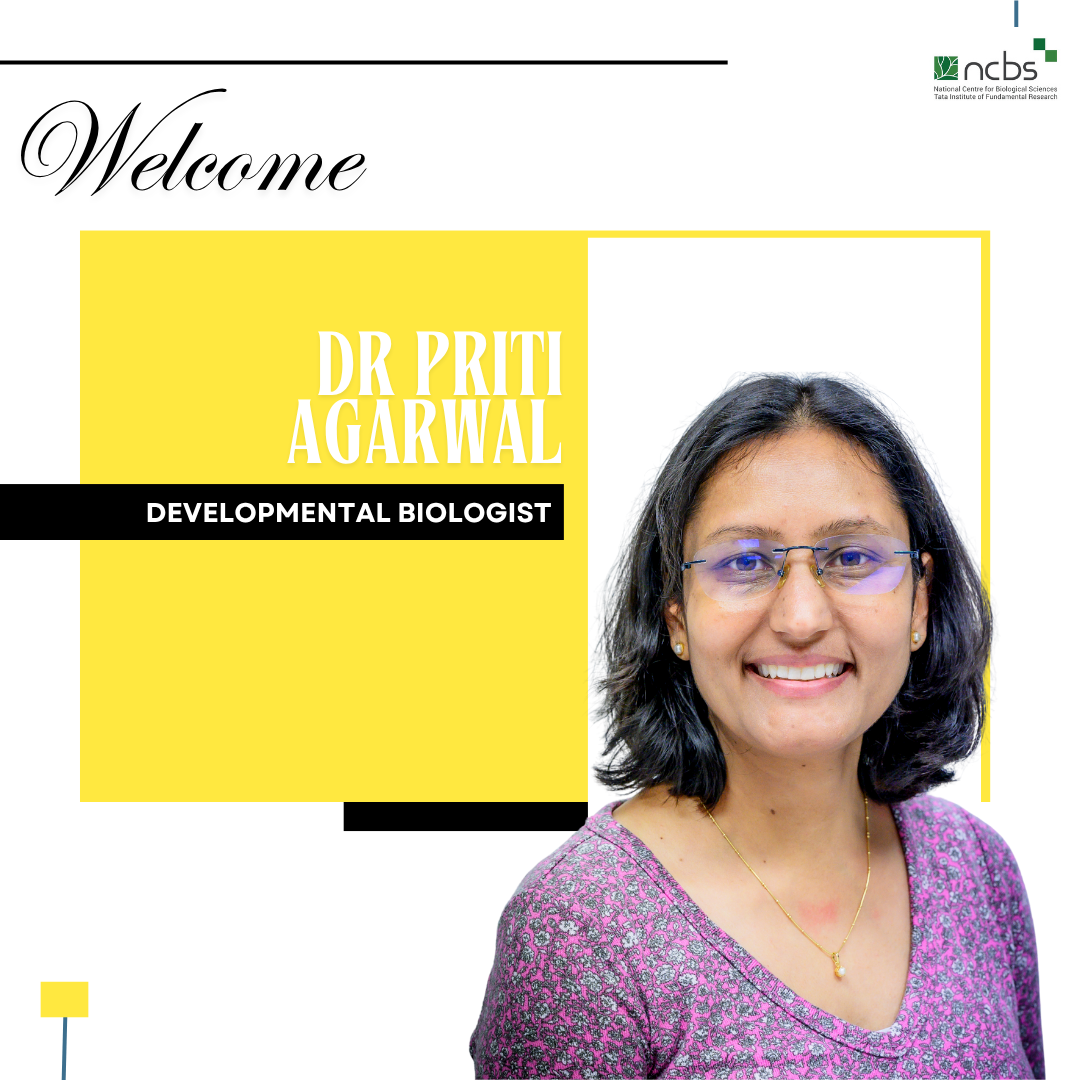The National Centre for Biological Sciences (NCBS) welcomes Dr. Priti Agarwal, who joined as an assistant professor in March this year.
With a keen focus on developmental biology and mechanobiology, Priti’s research explores the interplay between cellular mechanics and developmental processes to uncover the fundamental principles behind organ morphogenesis.
In this interview, Priti talks about her journey, motivations, and research, along with her exciting plans for the future at NCBS.
Priti’s passion for science began during her school days, where she was captivated by the workings of living organisms. "I was always fascinated by how living things worked, especially at the cellular level," she said. However, it wasn’t until her Master’s program, during internships, that the hands-on experience truly ignited her passion for research. It was during these internships that Priti witnessed the scientific process in action—from designing experiments to the thrill of making discoveries.
Her exposure to the intricacies of biological research laid the foundation for pursuing a PhD in Biology. "I still remember the first lecture my PhD supervisor gave on how a single cell transforms into a multicellular organism," said Priti. It was in this moment that she was fascinated by developmental biology. Diverse projects led by different researchers on campus—ranging from cancer biology in flies to neurodevelopment and skeletogenesis in chick and mouse embryos—Priti’s exposure to various model systems broadened her perspective and deepened her appreciation of the field.
"I started to develop a strong interest in the physical aspects of development, which eventually led me to the Mechanobiology Institute in Singapore," said Priti.
Priti recounts how a particular observation at the Mechanobiology Institute sparked the question that would define much of her work. "I was captivated by how live imaging could reveal the dynamics of migrating cells, but I noticed that much of the research was being done in simplified in vitro systems," she said. This led to a pivotal question: how do these processes actually play out in vivo, within the complex environment of a living organism?
This curiosity led Priti to focus on the migration of the distal tip cell (DTC) in C. elegans, a well-established model organism. Traditionally, the DTC was seen as the active migrator, pulling the follower germ cells along. However, through live imaging, genetic perturbations, and physical modelling, Priti and her team discovered something entirely new. "We found that the DTC is not the primary force driving movement. Instead, it is the proliferating germ cells behind the DTC that generate the pushing forces, propelling the DTC forward. The DTC functions more as a navigator—setting the direction, while the follower cells act as the engine," she said.
Like many scientists, Priti’s career has had its fair share of challenges. One of the most difficult moments was moving from Singapore to Israel at the onset of the COVID-19 pandemic. "Dealing with travel restrictions, lab closures, and the uncertainty of settling into a new environment made it a tough period both professionally and personally," she said.
Later, while seeking an independent position in Israel, the country was facing war, adding another layer of complexity. "Planning for the future during such upheaval was challenging, but these experiences taught me a lot about resilience and adapting to uncertain situations," Priti said.
Priti shares that the journey into developmental biology was not a straightforward path. "I never set out to become a developmental biologist—it was more of an accidental discovery. But once I fell in love with the questions in the field, I couldn’t imagine studying anything else." What surprised her even more was the intersection of biology with physics.
"In the past, I viewed biology and physics as separate entities, but I have since realised how deeply intertwined they are," she said. "Concepts like forces, tension, stiffness, and flow, ideas I once associated with inanimate matter, turn out to be central to the dynamics of living tissues." This unexpected convergence of fields has kept Priti motivated and inspired, as she continued to explore the physical aspects of development.
Throughout her career, Priti has been shaped by the mentors and labmates she has worked with. "Every mentor and labmate has brought a unique perspective to problem-solving that has expanded my way of thinking," she said. She also draws inspiration from scientists in other fields. "I love seeing how different disciplines approach big questions. This cross-pollination of ideas keeps science exciting and vibrant."
As for the future of her career, Priti admits that if she were not a scientist, she would have pursued a career in illustration. "I’ve always loved drawing. It’s how I first learned to observe and make sense of the world around me," she said. Even now, Priti sketches to process ideas and visualise biological processes, often creating graphical abstracts for her publications. "Illustration, like science, is about noticing details, telling stories, and finding clarity in complexity," added Priti.
Looking toward the future, Priti is excited by the possibilities in developmental biology. "In the next decade, I think we will see significant advances in understanding how mechanical forces and biochemical signaling feedback across different scales," she said.
This will help us uncover the conserved and unique biomechanical principles that organisms have evolved. This could open up new therapeutic targets for diseases where cellular mechanics are disrupted, she said.
At NCBS, Priti is excited to begin building her research lab. "What excites me most is the vibrant, interdisciplinary environment at NCBS. With researchers spanning developmental biology, computational biology, and evolutionary biology, it’s the perfect place to launch an independent lab," she said. The collaborative culture and access to cutting-edge facilities provide immense opportunities for scientific growth.
For prospective students and researchers, Priti’s advice: "Be bold, creative, patient, and compassionate. Skills can be learned, but these qualities will carry you far in your scientific journey. Stay curious and open-minded, and everything else tends to fall into place."










0 Comments